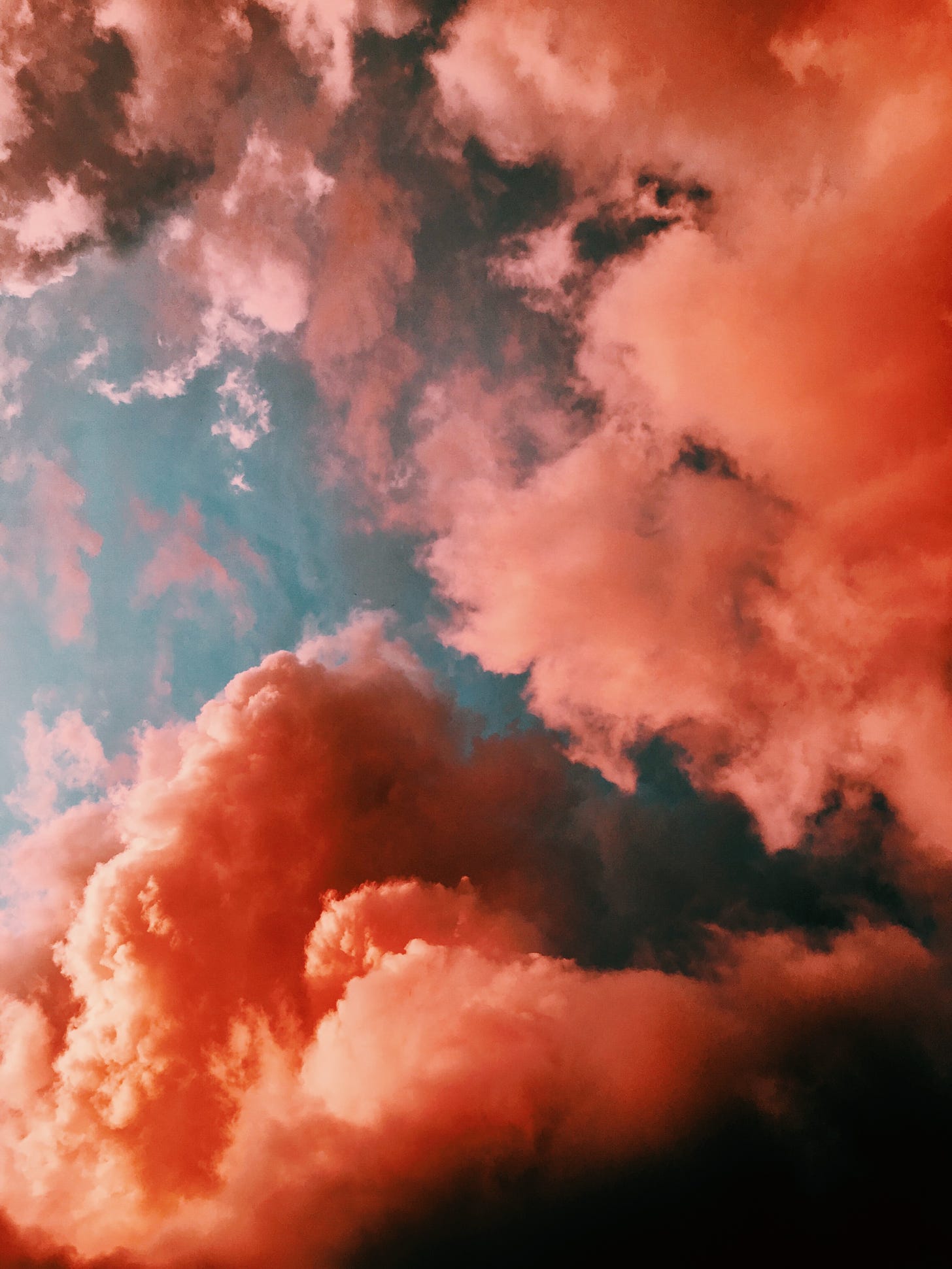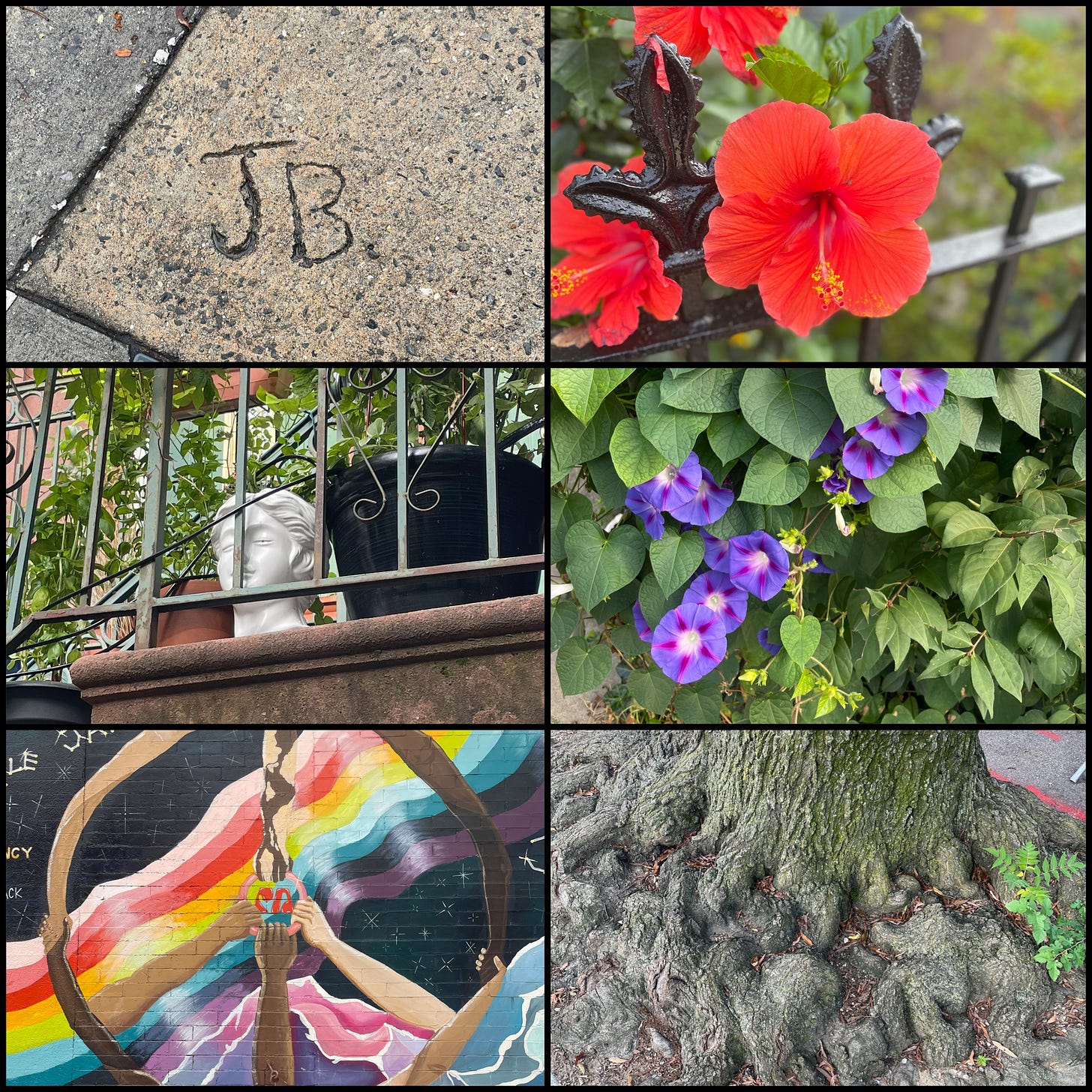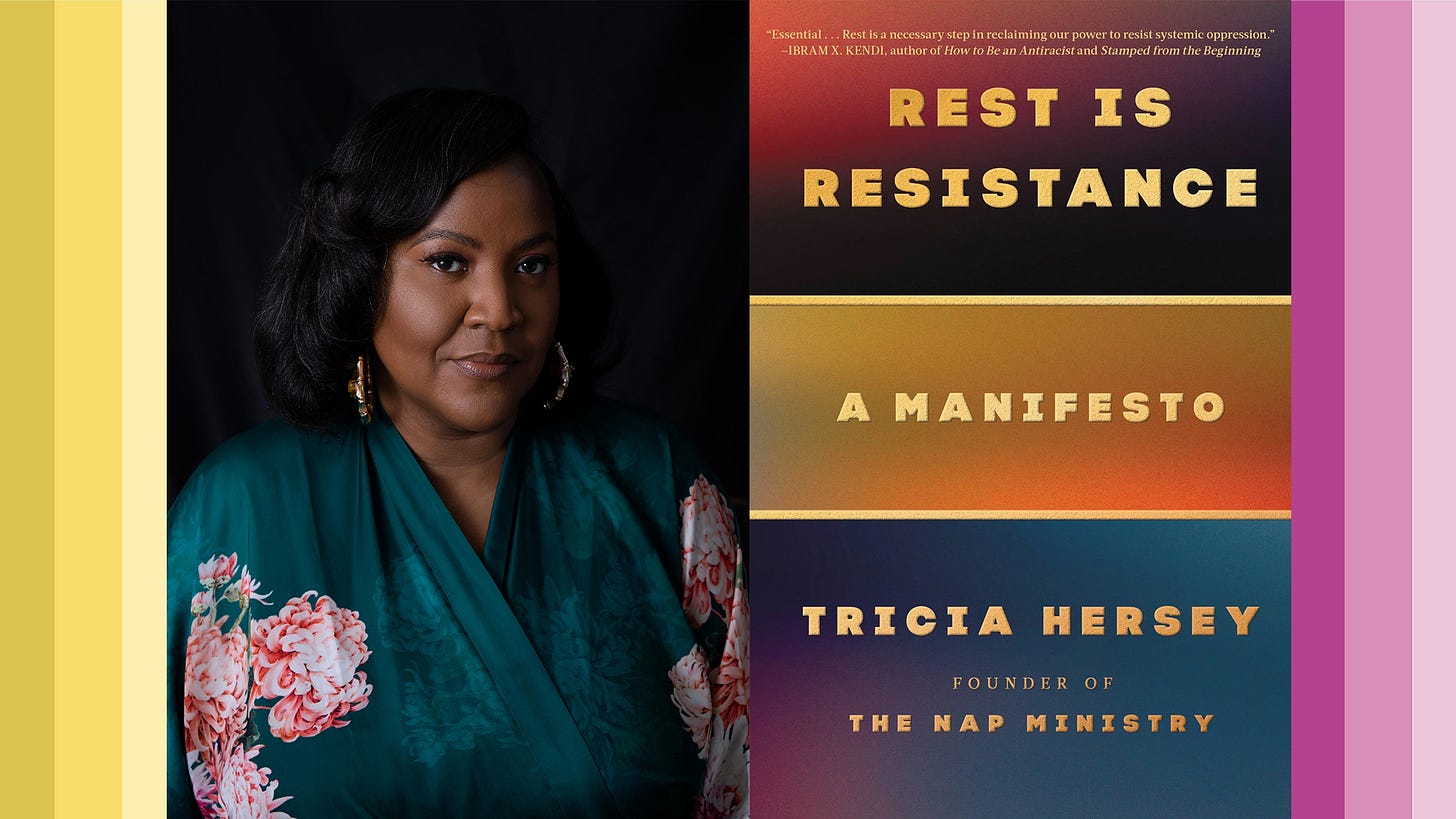
A few weeks ago I started taking walks first thing in the morning. Rain (well, cloud) or shine, I’d get up, dress, and head outside. Originally, this started as a way to help reset my circadian rhythm after some sleep issues kickstarted by noisy neighbors. And at first, I tried to use the time productively, listening to a news podcast to get a jump on my day.
But at a certain point, I decided to just wander around. Without any point of focus, my brain flittered about, alighting on all the items on my to-do list. Eventually it started quieting down. I noticed pleasant or fun little details like those in the pic below.
And then, best of all: ideas, images, and phrases started to pop up, unbidden. I’d find myself pulling out my phone to scribble down notes for my creative projects. During the rest of my day, I found it easier to notice when I was feeling a tug towards a certain activity, book, or media. Those items started filling in blanks in my projects, providing puzzle pieces that I sometimes didn’t even realize were missing.
This idea that mental space => creative breakthroughs is certainly not revolutionary idea; how long have we joked about eureka moments in the shower? But in our hyperproductive society, we often need to go beyond those mindful but necessary tasks to spending intentional time in a dreamy theta state to create complex or profound works. This may sometimes mean less writing and more contemplating. The question that I run into is: Why, for people in general and creatives specifically, can this prioritizing feel so difficult?
Earlier this year, I read NYT-bestseller REST IS RESISTANCE by Tricia Hersey, who runs the popular Instagram the Nap Ministry. Hersey posits that hyperproductivity and grind culture stem from a capitalist and white supremacist system that treats people like machines. We’ve been programmed to believe that our worth comes from how much work we do, and/or forces us to hustle just to survive. Hersey ties grind culture to slavery, when slave owners drove people to the very limits of their physical endurance. That legacy of overworking means that many now feel exhausted, burnt out, and disconnected from their bodies, particularly POC. This state is clearly not conducive to feeling creative and curious, or having the energy to even work on one’s art.
Hersey also discusses something she calls DreamSpace, which is specifically space to imagine a different way of living and existing, but can also refer specifically to creativity and art-making: “I am forever inspired by bell hooks and Octavia Butler for believing in and teaching us about imagination as a tool of our greatest liberation…I refuse to let grind culture gaslight me into despair and exhaustion. I can never forget what my Ancestors were doing even during racial terror. They centered joy, found rest, created art, and found pleasure in themselves and their families. This is my hope and my North star.”
This book struck a deep chord. Growing up, my Midwestern and Christian community stressed the importance of constant hard work and putting others first, leaving me continuously exhausted from an early age. Up until a few years ago, I couldn’t figure out where my fatigue was coming from. Doctors couldn’t point to any test results that would explain what was wrong. Finally, an acupuncturist made an astute observation. After I complained to her that I was still feeling tired all the time, she asked me: “Well, are you doing less?”
It’s incredibly difficult to push back against the norm of grind culture. Many of my creative coaching clients find it challenging to devote the time and energy they want to their creative pursuits because of how much they are doing—and then they feel guilty about it! I talk about the normalization of grind culture and encourage them to address stress and burnout before turning back to their projects. As Hersey says: “Your body is in a state of extreme exhaustion and therefore can’t offer you brilliant guidance waiting for you on the other side of disconnection. Connecting with your body from a rested state will open many portals of information.”
This entire year I’ve kept Hersey’s words in the back of my mind, which have helped me (attempt to) to prioritize rest and hold boundaries even in the midst of publishing my first novel. As I work on my second, I’m learning that DreamSpace is not only a pleasant idea, but an absolute requirement for me to create a complex and deeply personal work. When we give ourselves that space, ideas and connections move towards us through those opened channels.
And as my somatic coach Erika Ackermann has pointed out to me, the irony is that we can actually become more productive when we’re grounded, rested, and in touch with our bodies. We’re able to focus and complete tasks more quickly and easily, we can avoid the frantic stress of overwhelm, and we may decide to let go of things we feel like we should do, but don’t really want or need to.
If you’re feeling exhausted or uninspired or stuck, how can you center DreamSpace in your life, even for just a few minutes at a time? What are your thoughts about hyperproductivity and grind culture? What are other ways that you connect with yourself and your work? I’d love to hear in the comments below!
Note: I am so excited to announce an October workshop very soon! Keep an eye out; if you happen to like my work, I think you’ll really enjoy the topic.
Creative Coaching
Interested in learning more about my creative coaching services? As a licensed therapist and NYT-bestselling novelist, I bring a unique set of skills to my creative coaching business. In our 60-minute sessions, we will explore and find solutions to your creative challenges in a way that feels enjoyable and sustainable. I support people who have specific questions ("Why can't I start/finish my project?" or "Why am I struggling to get an agent?") and those with more general issues ("How can I use social media to support my creative projects?" or "How can I integrate more joyful creativity into my life?"). My view is that our creative life should be exciting and fulfilling, instead of stressful and overwhelming. I offer different sized packages based on different needs. More on packages/pricing in the Work with Me section of my website. Reach out with any questions (juliabartz@gmail.com), and if you’d like to book with me, you can fill out a quick request form here.






Yes to all of this! Walks are so important to me in my creative process. Putting my body in motion gets my creative thoughts moving, too. But rest is also important!. A long time ago I heard the phrase "bed, bath, bus" as the places where people most often get their creative ideas. (Of course, you could switch out bath with shower or bus with walk/drive/subway).
Loved this - thank you!